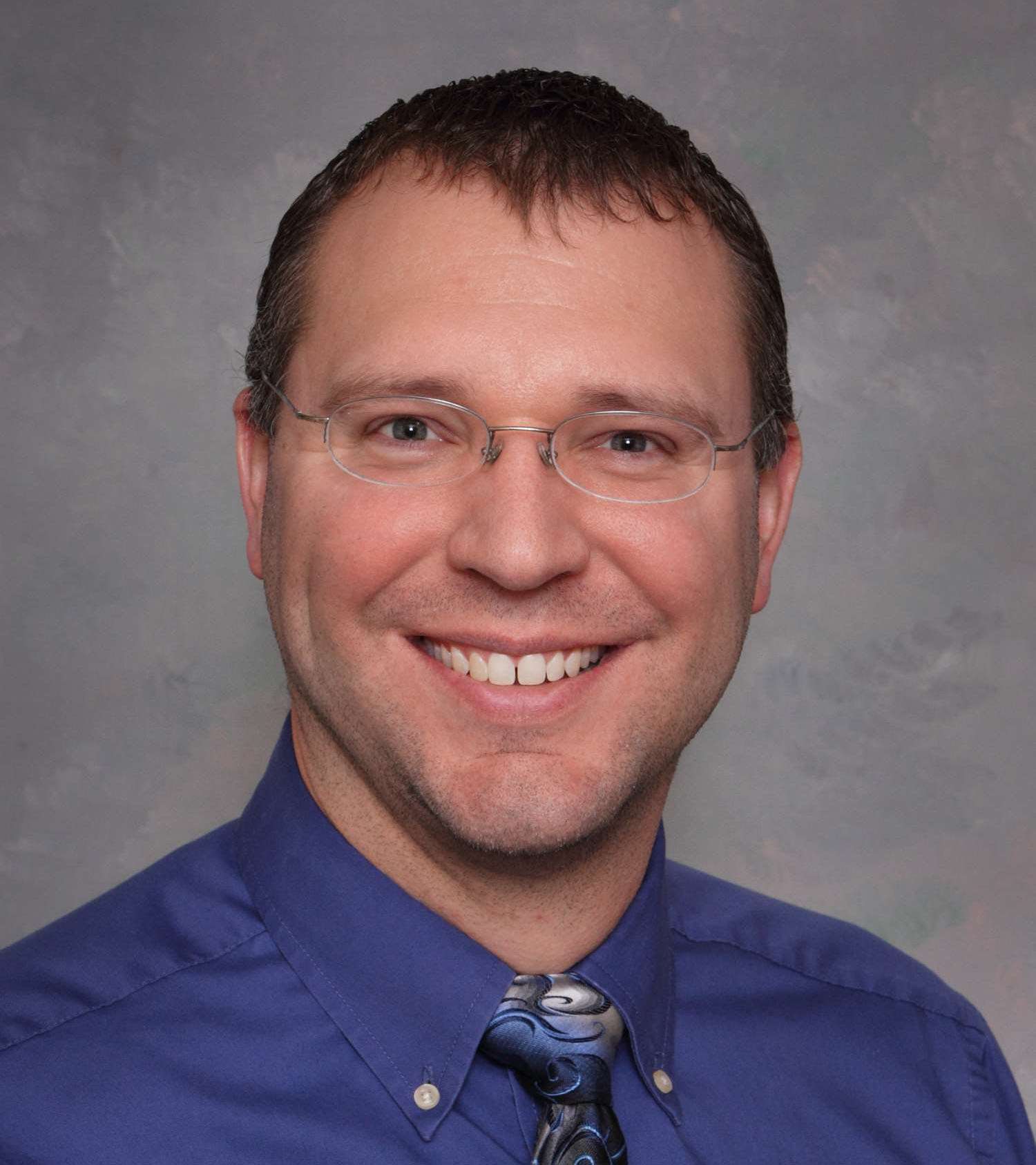
Andrew S. Nencka, PhD
Associate Professor; Associate Director, Center for Imaging Research (CIR); Section of Imaging Research, Division of Imaging Sciences
Locations
- Medical College of Wisconsin
Department of Radiology
Contact Information
Education
BS, Physics & Mathematics, Marquette University, Milwaukee, WI, 2004
Research Experience
- Data Interpretation, Statistical
- Diffusion Tensor Imaging
- Echo-Planar Imaging
- Image Enhancement
- Image Processing, Computer-Assisted
- Machine Learning
- Magnetic Resonance Imaging
- Models, Statistical
- Monte Carlo Method
- Regression Analysis
Leadership Positions
- Associate Director, Center for Imaging Research, 2016-Present
- Chair, Faculty IT Committee, 2014-2016
- Chair, Research MRI Safety Committee, 2012-Present
- Secretary, Faculty IT Committee, 2016-2017
Research Interests
One aspect of my research work has been to leverage the phase of acquired images, along with varying receive coil sensitivities, to further spatially encode the acquired data. With the assumption of real-valued images—an assumption often made for partial Fourier image reconstruction—this insight theoretically enables acceleration factors of 2N for an array of N coils. We have used this technology to implement a parallel slice acquisition method that simultaneously excites an array of slices with varying magnetization phase such that the magnetization phase and receive coil sensitivity profiles can be used to unalias the acquired slices. We have also used this technology to acquire and unalias accelerated single-slice images acquired with a single-channel body receiver coil.
Fast MR Relaxometry
Image acceleration techniques have enabled the development of a fast relaxometry pulse sequence, which we have named the gradient-recalled echo, asymmetric spin echo (GREASE) pulse sequence. The pulse sequence, including six echo-planar imaging readouts, two 90-degree excitation pulses, and two 180-degree refocusing pulses in each repetition, allows the computation of T1, T2, and T2* with each repetition. The acceleration techniques of GRAPPA and partial Fourier acquisition in the echo-planar imaging readouts reduce the duration of the imaging readout train so that signal decay does not eliminate the needed signal in later echoes. Thus, the relaxivity values for a single slice of 2 mm isotropic resolution can be acquired in less than 300 ms with this sequence. Further, the nearly simultaneous acquisition of the six images, the identical echo-planar imaging readouts, and the usage of the six images from each repetition for the estimation of relaxivity parameters allow the perfect coregistration of the computed maps.
Publications
-
(Koch KM, Nencka AS, Kurpad S, Budde MD.) J Neurotrauma. 2024 Apr 10 PMID: 38251658 01/22/2024
-
(Pahapill PA, Arocho-Quinones EV, Chen G, Swearingen B, Tomas CW, Koch KM, Nencka AS.) J Pain Res. 2024;17:1453-1460 PMID: 38628431 PMCID: PMC11020324 04/17/2024
-
T1-/T2-weighted ratio reveals no alterations to gray matter myelination in temporal lobe epilepsy.
(Denis C, Dabbs K, Nair VA, Mathis J, Almane DN, Lakshmanan A, Nencka A, Birn RM, Conant L, Humphries C, Felton E, Raghavan M, DeYoe EA, Binder JR, Hermann B, Prabhakaran V, Bendlin BB, Meyerand ME, Boly M, Struck AF.) Ann Clin Transl Neurol. 2023 Nov;10(11):2149-2154 PMID: 37872734 PMCID: PMC10647008 SCOPUS ID: 2-s2.0-85174616650 10/24/2023
-
(Chu DY, Adluru N, Nair VA, Choi T, Adluru A, Garcia-Ramos C, Dabbs K, Mathis J, Nencka AS, Gundlach C, Conant L, Binder JR, Meyerand ME, Alexander AL, Struck AF, Hermann B, Prabhakaran V.) Epilepsia. 2023 Sep;64(9):2484-2498 PMID: 37376741 PMCID: PMC10530287 SCOPUS ID: 2-s2.0-85164792241 06/28/2023
-
(Pahapill PA, Chen G, Arocho-Quinones EV, Nencka AS.) Neuromodulation. 2023 Jul;26(5):1009-1014 PMID: 37204362 SCOPUS ID: 2-s2.0-85159401230 05/19/2023
-
(Garcia-Ramos C, Adluru N, Chu DY, Nair V, Adluru A, Nencka A, Maganti R, Mathis J, Conant LL, Alexander AL, Prabhakaran V, Binder JR, Meyerand ME, Hermann B, Struck AF.) Cereb Cortex. 2023 Jun 08;33(12):8056-8065 PMID: 37067514 PMCID: PMC10267614 SCOPUS ID: 2-s2.0-85163480791 04/18/2023
-
Development and Stability Analysis of Carpal Kinematic Metrics from 4D Magnetic Resonance Imaging.
(Sharafi A, Nencka AS, Koch KM.) ArXiv. 2023 May 25 PMID: 37292477 PMCID: PMC10246087 06/09/2023
-
(Panigrahy A, Schmithorst V, Ceschin R, Lee V, Beluk N, Wallace J, Wheaton O, Chenevert T, Qiu D, Lee JN, Nencka A, Gagoski B, Berman JI, Yuan W, Macgowan C, Coatsworth J, Fleysher L, Cannistraci C, Sleeper LA, Hoskoppal A, Silversides C, Radhakrishnan R, Markham L, Rhodes JF, Dugan LM, Brown N, Ermis P, Fuller S, Cotts TB, Rodriguez FH, Lindsay I, Beers S, Aizenstein H, Bellinger DC, Newburger JW, Umfleet LG, Cohen S, Zaidi A, Gurvitz M.) Journal of Cardiovascular Development and Disease. September 2023;10(9) SCOPUS ID: 2-s2.0-85172930672 09/01/2023
-
(Koch KM, Nencka AS, Klein A, Wang M, Kurpad S, Vedantam A, Budde M.) Front Neurol. 2023;14:1172833 PMID: 37273696 PMCID: PMC10236479 SCOPUS ID: 2-s2.0-85161052826 06/05/2023
-
(Duenweg SR, Brehler M, Bobholz SA, Lowman AK, Winiarz A, Kyereme F, Nencka A, Iczkowski KA, LaViolette PS.) PLoS One. 2023;18(3):e0278084 PMID: 36928230 PMCID: PMC10019669 SCOPUS ID: 2-s2.0-85150250210 03/18/2023
-
(Pommy J, Conant L, Butts AM, Nencka A, Wang Y, Franczak M, Glass-Umfleet L.) Neuropsychol Dev Cogn B Aging Neuropsychol Cogn. 2023;30(6):903-922 PMID: 36648118 SCOPUS ID: 2-s2.0-85146479741 01/18/2023
-
(Reiter K, Butts AM, Janecek JK, Correro AN, Nencka A, Agarwal M, Franczak M, Glass Umfleet L.) Neuropsychol Dev Cogn B Aging Neuropsychol Cogn. 2023;30(6):940-956 PMID: 36573001 SCOPUS ID: 2-s2.0-85145338983 12/28/2022



